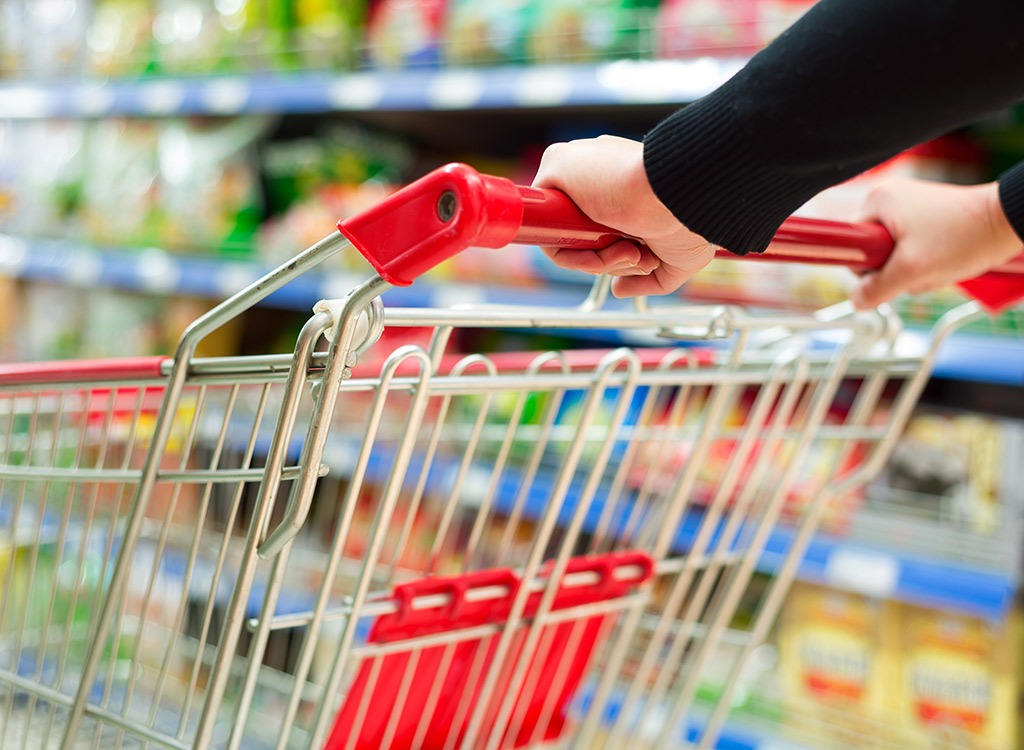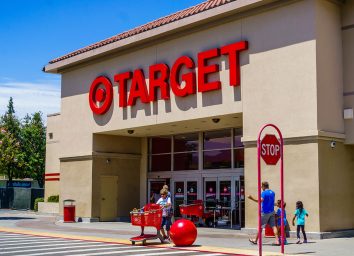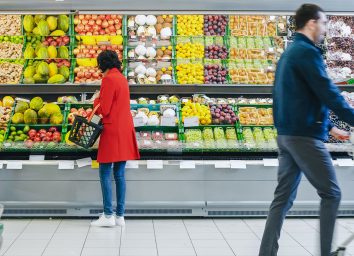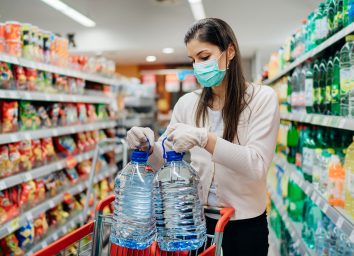5 Red Flags Your Grocery Store Isn’t Safe to Shop In

Not long ago, if someone asked you why you chose to shop at your favorite grocery store, you would’ve answered with something along the lines of “price.” Or, maybe, “it’s close to my home.” Today? Well, your answer more likely boils down to a single word: “safety.” And rightly so.
As coronavirus cases continues to spike in many states across the country, the local grocery store remains one of the places you’re most likely to come face-to-face with other people in close quarters.
Though it’s impossible to know for sure whether or not your grocery store is 100 percent safe, there are a number of warning signs hiding in plain sight that you should be able to recognize as problematic. If you’re curious what they are, read on—because we’ve listed them all right here. And, for more ways to stay safe while you shop, make sure you’re aware of The Grocery Stores That Are Easing COVID-19 Restrictions Too Soon.
There Is No Clear Policy Posted at the Door

While states and counties differ in their specific regulations, every store should at least state explicitly what their policies are when it comes to preventing the spread of COVID-19 at the door before you set foot in the store.
If there’s no sign posted and no indication at the front that there are particular measures in place, that should tell you that you may want to just keep on walking.
According to Leann Poston, MD, a physician with Invigor Medical in New York, not having a policy posted “means that the store does not have a policy or is not enforcing one. Most stores state whether a mask is required and how many people are admitted to the store at a time.” (Related: These Hard-to-Find Grocery Items are Back.)
The Store Has Poor Ventilation

The CDC guidelines state that COVID-19 is less likely to spread via surfaces (say, by touching a can of soup after someone who was infected touched it) than through small droplets in the air spread from one person to another. That makes ventilation vital for the store.
The doors should be open and you should be able to sense the moment you step inside that the air is flowing steadily throughout the store. If you step inside and the atmosphere feels stuffy and stagnant, turn around and head elsewhere.
“If there is no fresh air circulation, then it increases the chances of spread of infection,” says Rashmi Byakodi, BDS, and editor of Best of Nutrition. “Having small closed places in the shop can increase the risk. According to CDC guidelines if there is a centralized AC, then it should be used at full fresh air capacity to keep people safe.” (Related: 8 Grocery Shopping Tricks That Actually Work.)
There’s No Sanitizer for You to Use

One of the easiest ways that grocery stores—or any shop for that matter—can help reduce the spread of infection is to make hand sanitizer widely available. A sanitizer dispenser at the front of the store or where you pick up the cart (or better yet, strategically placed throughout the store) is a reassuring sign, as are individual bottles at each checkout counter.
But if the store has none, leaving you digging for your own mini bottle, it means that there are plenty of customers—and workers—who probably aren’t bothering to sanitize their hands at all.
“A lack of hand sanitizer indicates that no one is cleaning the carts including the customers,” says Poston. “It is tiring and expensive for stores to maintain these sanitation policies. If infection numbers start to decline, so might the store owner’s attention to detail.” And while you’re shopping, make sure you notice This One Major Change on Grocery Store Shelves.
The Checkout Area Is Super Crowded

The checkout area is perhaps the most dangerous place in all of the grocery store, since it is here where people are most likely to congregate and where the most concentrated number of interactions between people are happening (not to mention where all those touchpads, cards, and other bacteria-carrying surfaces are). So when you enter the grocery store, you want to be sure that area appears orderly with plenty of room for customers to social distance.
“If it is not possible to maintain social distance during checkouts then avoid such shops,” says Byakodi.
This means that there should be clear direction about where those making purchases should stand and how far apart they are expected to be from one another. Are there individual lines for each register, or one long line that feeds into all the registers? This should be clearly delineated in the store.
To help with an orderly checkout, Byakodi adds that “shops should allow touchless payment or payment through the phone to make it more convenient.” Self-checkout or even online payment would also help, whenever possible. (Related: Walmart May Remove This Key Area From Its Stores.)
They Don’t Require Face Masks

Duh. “Masks reduce the spread of COVID19 significantly,” says Byakodi. “If the grocery store is not enforcing the customers to wear masks while inside the store, then avoid such stores.”
If your grocery store requires customers to wear masks, it makes it much more likely that they’re taking other precautions in reducing the spread of the illness and that their workers are, too. For more, check out the 100 Unhealthiest Grocery Foods in America.








